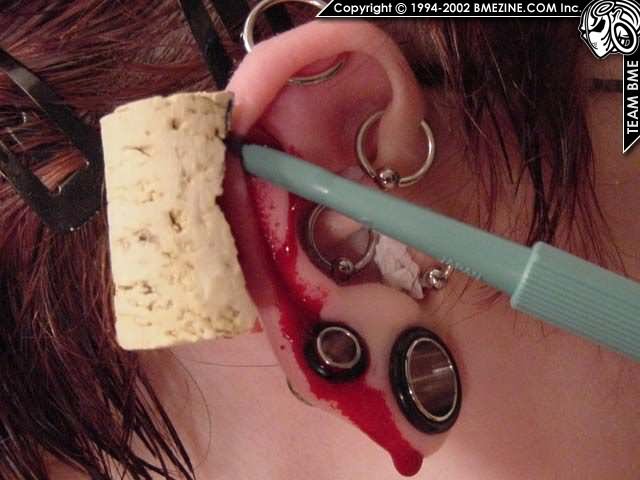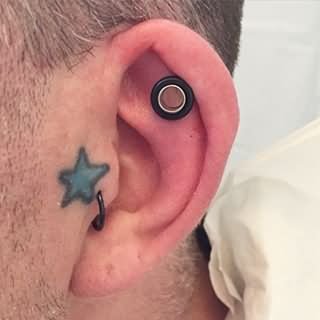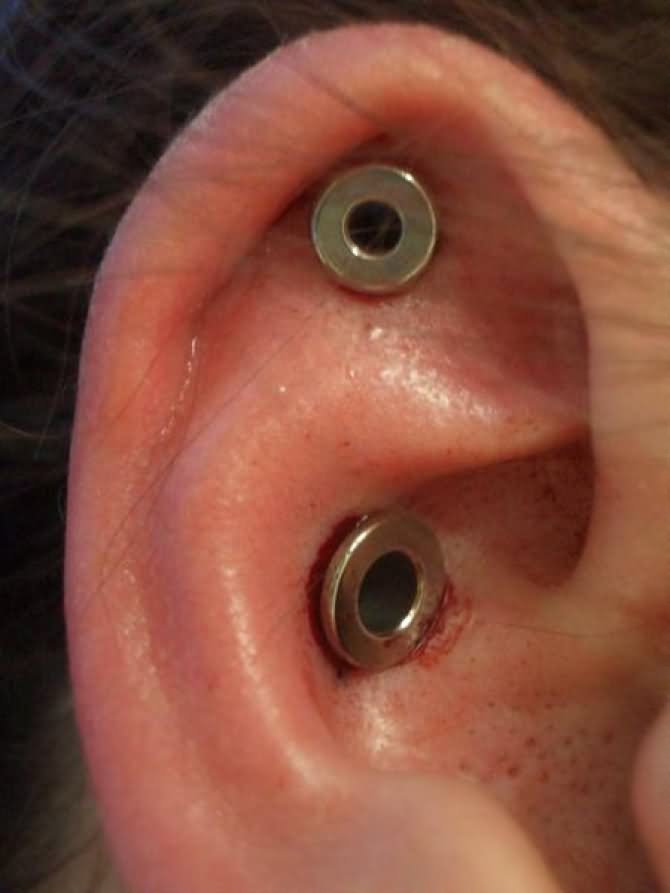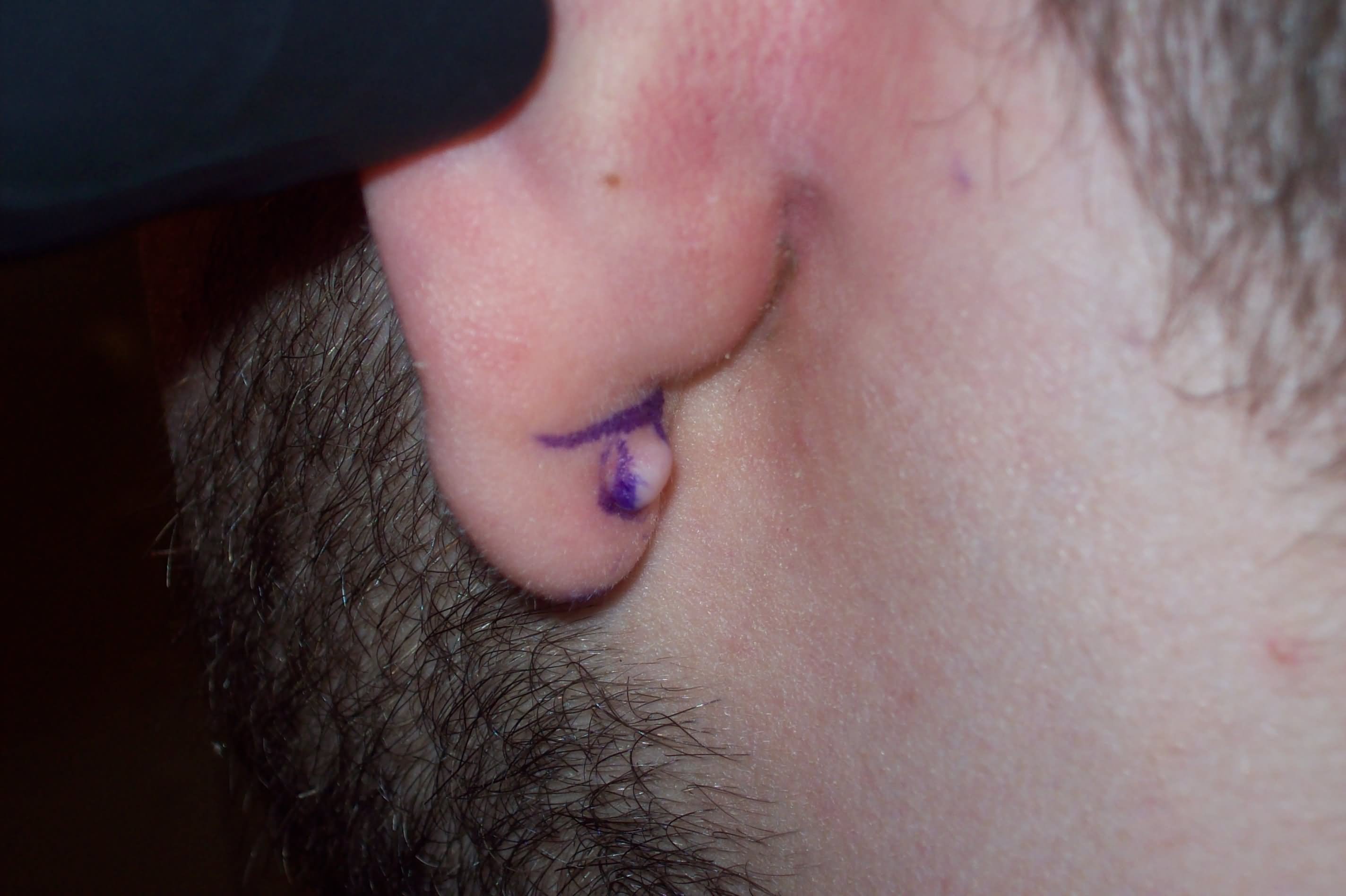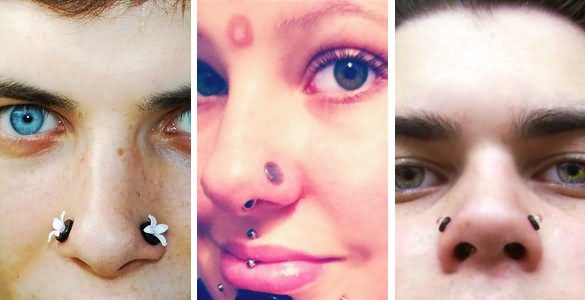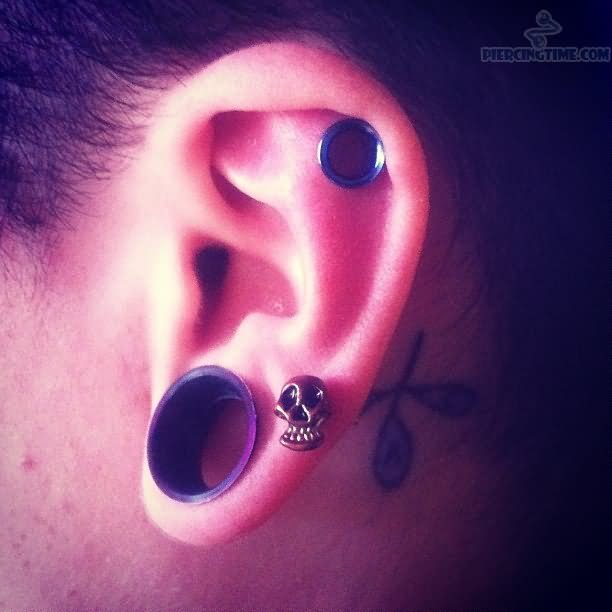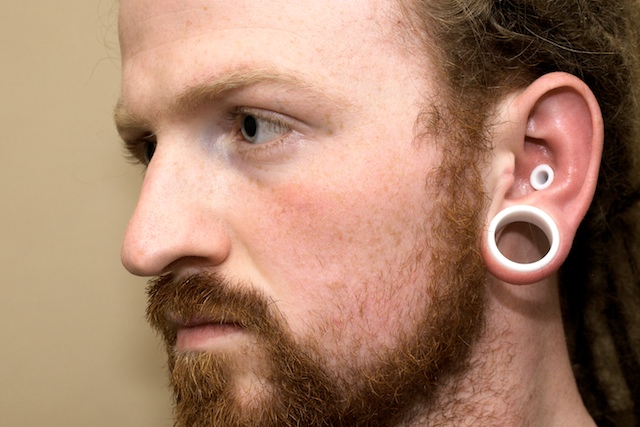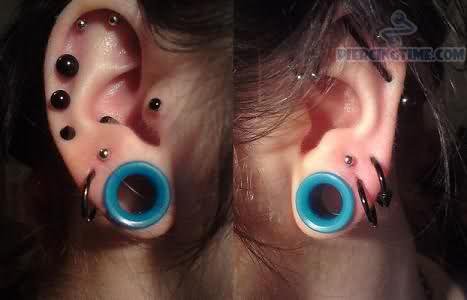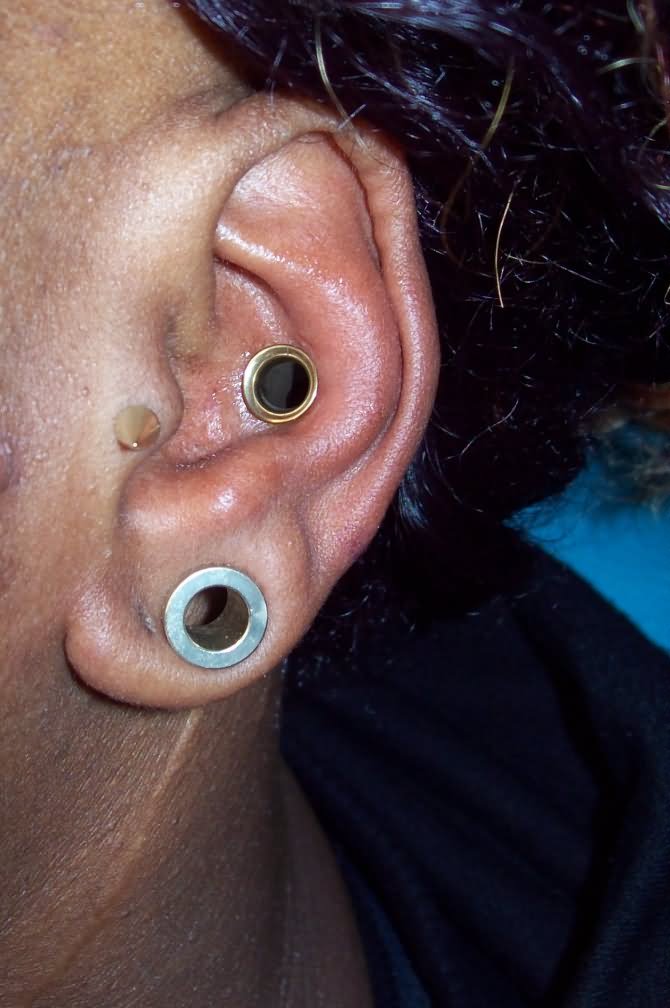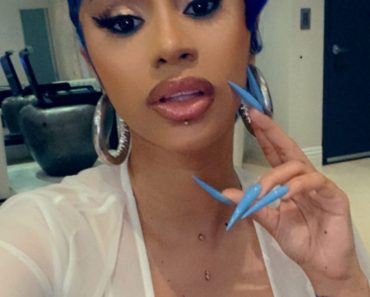The term ‘Body Modification’ is itself pretty scary and has negative implications for the ones who have no idea about what it is really about. Just like tattoos, people with any sort of body modification can be easily judged and put down by the ‘normal people out there. However, the truth is that body modification has been a part of our civilization since time being and rather than seeing it in the negative light, it was something to be proud of. In every human race, class, gender, and no matter what part of the world they belonged to, humans have experiences body modifications in one way or another. But, the reason for each set was always different. It could be anything from social status, wealth, and group distinction. Some also take part in it because of deeper significances related to spiritual or religious matters. For example, in ancient African cultures, when a rite was completed, it was denoted by putting scars all over the body by the elders of the group and endured by the young ones. The marks were rather a thing to be proud of than something which could be hidden from. On the other hand, some communities use modifications for beautification purposes. It is done by both genders according to different beauty standards that their community follows.
Now that we have briefed you about what and how body modifications work in our society, it is time to discuss how did it came to being and to what extent do people go for such changes.
Piercing
It is rather naive to say that piercing is something that came into existence more recently. As a fashion trend, yes, it might have but piercings have been a part of our culture for a long time. It also has had various significances, or meanings for different communities that came to light with legends, myths, and fables. Even the placements of the piercings were important. Nose piercing is one of the most common forms of body piercing and has existed for 4,000 years now. It started in the Middle East but continued in countries like India and the trend grew up in the 16th century and has spread all over the world today. You would be surprised to know that both nose and ear piercings have been discussed in the Bible (Genesis 24:22, Isaiah 3:21). Piercings on different parts of the body are now more common than it has ever been and is practiced rather unconventionally. Lip piercings in the form of enlarged piercings or huge disk-like objects are practices in countries like Southeast Asia, Africa, and South America as a form of beauty standard. The piercings are all rage these days even in the west too but the primary focus is beauty and aesthetics or following some kind of movement rather than any other religious, or cultural purposes.
Scarification & Branding
Scarification came into being because of the dark-skinned people for whom tattooing was not effective. The reason was that their skin had a lot of melanin and any tattoo was not visible. There are even people who practice it till now. Such communities include people from Papua New Guinea’s Sepik region where the people are referred to as “crocodile people”, The aboriginal tribes of Australia, and the people from Ethiopia called Karo. But we are surely more people practice scarring besides these tribes. In reality, scarification is just one of the processes in the rites and rituals that they follow.
Today in the West, not many people practice scarring because tattoos are much wider in trend and with the advent of white ink tattoo which is visible even on the dark skin. However, some people still practice it which includes the devotees. The healing procedure of scarification has less to do with pleasing aesthetically rather than a sanctimonious procedure and in addition to this, the healing process is rather painful and takes a lot of time. That is probably the main reason why scarification did not ever get as much preference as the tattoo.
Implanting
Implanting is the process of surgically putting some material inside your body, beneath the skin to enhance its visual and aesthetic outlook. While it is rather a new procedure that involves new technologies, beading or pearling is a common implanting procedure that was practiced by seamen in the South Pacific and Yakuza for hundreds of years. It involves genital beading and the history of it is rather unknown. It was also extremely popular among the prisoners of the Soviet Union and many other parts of Europe. Although its popularity has been lessened with time, some people still do practice it with Teflon and silicone beads along with ribs, which is a much safer option than the traditionally used organic implants. Other kinds of implants like breast, calf, bicep, and chin implants are fairly common amongst people for aesthetic reasons.
There are many forms of illegal practices that are also performed that are called the Transdermal Implants done by the “cutters” (which is the term for skilled but illegal practitioners that remain rather underground and work for a selected few.) Although it involves many dangers and is rather difficult to heal, it is still extremely popular among those who are obsessed with body modification. Recently, a new trend has been seen which is called Microdermal or “surface anchors” that can be achieved at almost any tattoo studio. These transdermal jewelry called the Microdermals are implanted right under the dermis with a simple procedure and a moderate pain tolerance level. The forms of these implants are metal mohawks of spikes, glimmering jewels, and gems that can be worn at any part of the body, and added ornaments to previously existing tattoos are some of the ways. But besides all this, these require a lot of care and you might not be able to adjust with it for a couple of weeks and therefore, it is not advisable for everyone.
So basically that is all that you have to know before we move further into something specific like dermal punching.
Dermal Punching
Dermal Piercings are known by some other names too like a single-point piercing because, as the name suggests, they do not have, unlike the usual jewelry, a separate exit, and entry point. The concerned person would just pierce a single hole so that the jewelry or the anchor, which is just 6 to 7 mm long, can be inserted into your dermis, which is also the middle layer of the skin. Then, whichever jewelry that you want is fixed on the top of it. The anchor serves as a base while the jewelry is put on the surface of your skin which makes the onlooker feel like you have beads under your skin.
The question that now arises is that how is a surface piercing different from a dermal piercing? Well, even if the jewelry is fixed on the surface of your skin, it does not mean that it is surface piercing. Unlike dermal jewelry, surface piercing has different entry and exit points. They are anchored with a different object, shaped like a barbell that is inserted underneath the skin too. And that’s exactly the difference between surface and dermal piercing.
Where most people prefer to get them includes:
- cheekbones
- nape of the neck
- chest
- lower back
- abdomen
- thighs
But this list is not restrictive. You can get any area of your skin pierced as long as the skin is thick enough to hold the anchors.
Dermal Punching on Ear Lobes
Dermal Punching on ear lobes is definitely in trend, as evident from the pictures below, but it does not mean it is healthy to do so. The punch for dermal punching would destroy the ear and hence needle piercing is a better option when it comes to piercing on ears. You can also try and get needle piercing first and then gradually stretch the size of the hole. Dermal Punching also involves the removal of tissues which when performed on something as thin as earlobes, can make it even thinner. Of course, something like this should be avoided as it is much better to have more tissue on your ear lobe if you want to stretch them.
Dermal Punching on Ear Cartilage
It is still not safe to stretch the cartilage for more than a few gauges but dermal punching is rather a better option for people who want a bigger gauge on their cartilage. The difference between the smaller punches and the bigger punches is that smaller punches need that jewelry must be worn during the healing time, while the larger punches do not require jewelry and are okay to go once the bleeding has stopped.
Risks
With dermal procedures comes many risks because it is a large artificially induced hole in your body. The bleeding can be severe and must be given proper time to heal as jewelry can put a lot of pressure on the wound. The kind of people who would require extra caution is the ones who suffer from hemophilia or people with thin blood. They must consider consulting a doctor before they take any steps like that. Medical assistance must be taken if the bleeding is incessant for a long period.
The second kind of risk can be due to an infection that comes with the needles. You need to make sure that not only needles but the environment and the jewelry are sterilized too. Make sure that when you get any kind of body modification, the practitioner is skilled and licensed. While the hole of the needle piercing might fill, the dermal punching is a permanent thing because the skin removed is much larger in this case as compared to that in needle piercing.
What are the kinds of jewelry that can be used for this punching?
The type of jewelry that can be used depends on the way the piercing is done. The piercing can be done by using a needle or with the more advanced dermal punch. However, these are the kinds of jewelry that you can use:
- Anchor: Any dermal piercing has to start with an anchor that is inserted underneath the skin. There are two kinds of anchors that have either a rounded base or a flat one.
- Top: After the anchor, which works like a base for your jewelry, the professional will set the kind of jewelry that you want, for instance, metal studs or magnetic gems.
- Diver: The first thing about the diver is that it is not interchangeable. They have pointed end with the jewelry that you like on the top. This kind of jewelry will be inserted with a dermal punch.
- Surgical titanium: Choose titanium if you have sensitive skin. This metal is least likely to cause any irritation or inflammation.
- Surgical stainless steel. Many people choose this as their piercing option and it is one of the most popular ones. It is considered hypoallergic but still, skin irritation is a possibility.
- Niobium. Like stainless steel, it is also hypoallergic, but it can corrode.
- Gold. When going with a gold option, choose a 14 carat yellow or white gold especially when you are in the healing stage. Gold higher than 18 carats is not long-lasting enough and the plated jewelry can easily cause infection or irritability to the skin.
The process involved in a dermal punch with a needle:
- The first step is to clean the ear with something sterilized, that is, some saline solution.
- After your skin is completely dried up, your ear will be marked with a pen or marker to make sure the punch is done in the right spot.
- They will punch a hole in your ear with a needle to create a pocket or opening for the anchor.
- Using forceps, your piercer will insert the anchor inside the hole and then place the anchor until and unless it is totally under the surface of the skin.
- After the anchor has been successfully set on the surface, the piercer will fix the jewelry on top of it.
For a dermal punch using the dermal punch machine, the process widely remains the same, except for the fact that the piercer will replace the needle with a dermal punch machine to make a hole in your ear.
- Placement of the anchor so that the fleshier the area would be, the less it will hurt.
- Kind of procedure; Dermal punching is considered less painful than the normal piercing.
- An Individual’s pain tolerance.
- The skills and experience that your piercer has.
- Infection. Any kind of piercing is prone to infection and if proper care is not taken during and after the process is done, you are likely to suffer from a skin infection. So make sure that you use sterilized materials and the environment.
- Displacement. If the anchor is not inserted properly, it might get displaced and move to another spot. It will lead to pain and infection.
- Rejection. Rejection is a process where your body may reject a foreign object by considering it unwelcoming. It happens most commonly when the anchor gets displaced and when the skin tissue expands in the dermis until the anchor is pushed out.
- Tissue damage. You can easily have tissue damage that may affect the surrounding blood vessels when the anchor is too deeply pushed or a greater force is applied.
- Hypergranulation. Hypergranulation usually occurs when the jewelry is too tightly placed or when the piercing is irritated. This happens due to many reasons, like, makeup, wearing tight fabric over it, or fiddling with the piercing before it has healed properly. The symptoms usually include red bumps around the pierced area. Make sure you clean the surface of your piercing with sterilized solutions like saline water.
- Scarring. Scarring is common if you decide to remove the piercing or if the skin has rejected the piercing.
The dos that you must follow are:
- The area around the punch must be covered in a bandage for at least a few days.
- Always wash your hands before you come in contact with the affected area.
- Use a new napkin or paper towel to clean your wound.
- Make use of sterilizing agents like saline water to clean your wound.
- It is important to clean the crust formation otherwise it can lead to infection.
- Make sure to not let it get wet, and so, cover the area with a shower cap or a cloth.
- Pat dry is better than rubbing the affected area so make sure you are quite gentle with that.
The list of don’t include:
- Avoid wearing tight clothes and let the skin breathe.
- Do not let your hair tangle in the jewelry because it will cause unnecessary pain.
- Do not indulge in high-intensity workouts or sports where collision and sweating are possible.
- If in a pool or bathtub, do not submerge the affected area in water for too long.
- Use antiseptic creams and soaps on the pierced skin.
- Do not run forcefully on the pierced skin.
- Do not ignore the cleaning process or let it skip it for another day.
- Do not change your jewelry continually until the healing process has been done.
- Do not play with or move your jewelry too much.
- severe pain
- severe swelling
- skin that’s hot to the touch
- yellow or green discharge
- foul odor
- rash
If your skin has rejected the foreign object, you may experience:
- jewelry displacement
- a drooping look of the jewelry instead of sitting flat on the ear.
- transparent or calloused skin encompassing the top of the ornament
- entire anchor dislodgement
- The first step is to wash your hands using an antibacterial soap before you touch the area.
- Clean the pierced area with a saline solution to disinfect it.
- Make sure it is completely dry afterward.
- Moving in an anti-clockwise direction, unscrew the jewelry. Do not unscrew forcefully and if you feel the jewelry is stuck, see your piercer as they use forceps to help it unscrew.
- Screw the new jewelry that you want to put in a clockwise direction.
- Clean the area again with the saline solution and pat it dry afterward.
- The first step is to use clean hands to sterilize the pierced area and then pat it dry.
- The next step is to unscrew the jewelry.
- Use the massaging technique to dislodge the anchor.
- Make a small incision using a scalpel relative to the size of your anchor.
- By using the scalpel again, he may remove any scar tissue around the piercing area.
- The anchor would then be pulled out of the skin by using forceps.
- The area would then be covered with a bandage and allow to heal.
It is advisable to get your piercing removed from the same place and the same person you got it from in the first place. However, if you decide to go ahead with a general practitioner or cosmetic surgeon, you must talk to your piercer first. If there are any complications, the piercer would inform you immediately and discuss the follow-ups.
The piercer who is skilled and has a reputation and experience for the job must be your go-to authority for any decisions related to your piercing. They can also take care of any questions or doubts that you may have before or after your process has been completed. They will also help you decide the exact area where you must get pierced and the jewelry selection if necessary.
This was all about Dermal punch. People who are into large gauge piercings might need a lot of patience because it does require a lot of time, like years of stretching and minimum jewelry change to achieve the desired look. It is both time-consuming and expensive. However, once you have stretched your ear, there is no way you can bring that to normal either. Therefore, many people who are into such stuff get their ears Scalpelled or punched. But, Scalpelling is not a perfect choice for something like this and piercings must be used to ix such problems. Both Scalpelling and derma punch have a higher degree of infection because of the damage they infest to the skin.
SCALPELLING
The process of Scalpelling involves a surgical scalpel to use on ears, mainly. Scalpelling is often used by people who do not want to stretch their ears by derma punch. Therefore, it is used as an alternative to it. However, it is not safe because if they stretch the ear too much while it has not produced enough tissues, the lobes would become too thin. Therefore, when stretched further, it may tear the lobes or make them partially damaged. Scalpelling would be ideal in the situation when someone already has a piercing that was done too low and there is excess skin available to be stretched further.
Ideally, then, the cut for this procedure must be straight up in the center of the existing piercing to increase 1 to 3 sizes up. One more reason to get Scalpelling done would be to align the crooked piercing. For this, the cut must be done at an angle rather than straight up. This would help to have a centered look once the procedure is done and healed. This procedure is also helpful in other modifications which are taken to extremes like, tongue splitting, implants, and ear pointing. Although modifications like these are minor then the piercings, they require the help of professional piercers called modification artists. However, things like these are most often rare because they are illegal. So even if you got someone who is skilled and experienced at his job, chances are he is running an illegal salon. On the other hand, a license to perform dermal punch is readily available for people.
We have provided some pictures below so that you would have a better idea of what dermal punching looks like:
6mm Dermal Punch Piercings
Amazing Dermal Punch Ear Piercing
Amazing Dermal Punch Piercings For Right Ear
Cartilage Dermal Punch On Left Ear
Cartilage Dermal Punch Piercing
Dermal Punch 4mm And 6mm Piercings
Dermal Punched Ear Piercing
Dermal Punch Lobe Stretching
Dermal Punch Nose And Cartilage Piercings
Dermal Punch On Left Ear
Dermal Punch On Right Ear
Dermal Punch Piercing On Lobe And Cartilage
Dermal Punch Piercing On Man Right Ear
Dermal Punch Piercing With White Gauge
Dermal Punch Right Ear Piercing
Ear Cartilage And Dermal Punch Piercing
Ear Lobe And Dermal Punch For Guys
Extreme Ear Lobe And Dermal Punch Cartilage Piercing
Lobe, Tragus, and Dermal Punch Piercing
Eyelid And Dermal Punch Piercing



